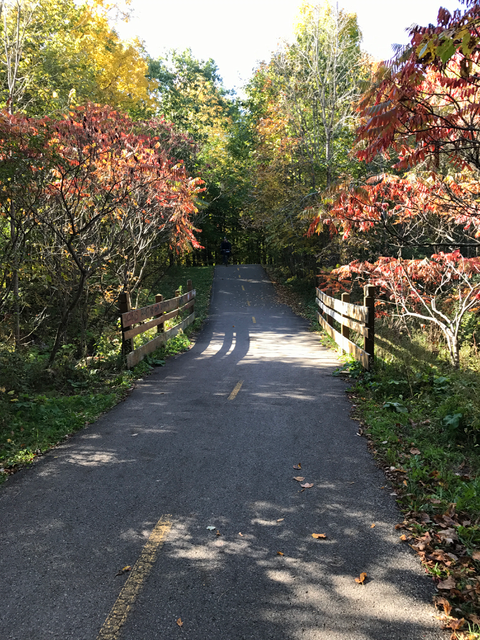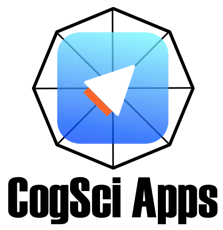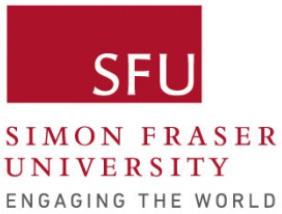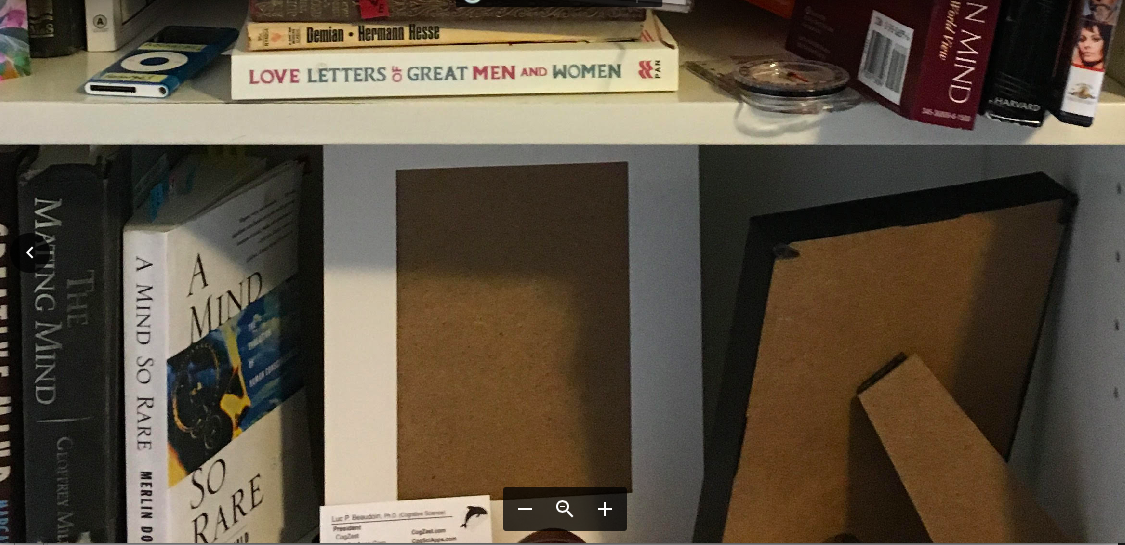
Here’s a review of what I was up to in 2016. Why publish this online? Well…
- Given that I develop cognitive productivity products (software and knowledge), I suppose some readers of this blog might care to read about my cognitive output and activities.
- I don’t report to an employer (being the president of CogSci Apps and sole proprietor of CogZest), and an adjunct prof at Simon Fraser University. This might help my teams and my Dean at SFU see other things I’ve been up to. And reviews are helpful to me as well.
- Prospective students often ask what kinds of things they can do with a degree in cognitive science or psychology. This type of update illustrates that such a degree can prepare one for many different types of work (particularly if it includes AI [software design and computer programming].)
Unless otherwise stated, this entire document describes calendar 2016. I split my time roughly equally, about 1/3, 1/3, 1/3 for each of CogSci Apps, CogZest and SFU. Almost all of my projects overlap involve at least two of these organizations.
At CogSci Apps Corp.

I am president, product designer and product manager at CogSci Apps Corp.. It’s a small business, so I handle most of the customer support, I keep detailed financial records for the bookkeeper and accountant to use, and I keep abreast of developments in information technology, handle intellectual property, etc..
- We made major progress in developing a new (super-secret!) macOS/iOS app whose abbreviated code name is “MM”. Hint, it is based on a concept I published in Cognitive Productivity. This extremely innovative, clever, user-friendly, helpful product contains several new patentable inventions. (Truth be told, I can hardly contain my enthusiasm about it! We expect it to change how millions of people use knowledge to become more effective. Stay tuned!)
- I wrote a large number of detailed functional specifications. (Writing specs is one of my favourite activities that most easily puts me in flow. This is a skill I perfected at Abatis Systems Corp. I wrote the largest number of technical documents for its library. One day I must write an article on the cognitive and scientific benefits of writing creative yet reality-constrained technical specifications).
- In June 2016, we released another first: a personalized body scan meditation pack for our mySleepButton® iOS app. The new pack is a highly configurable body scan meditation assistant. It also facilitates monitoring one’s peri-personal space. (The latter feature is a new application of research on the brain’s “body maps”.) This seemingly simple project required a surprising amount of work.
- We published mySelfQuantifier in collaboration with CogZest. In effect, I did all the work for this self-quantification system, which I developed over many years. I contend that mySelfQuantifier is the most efficient, precise and systematic way to quantify knowledge work and manifold activities, so long as you have frequent access to a computer. (It could be adapted to iOS).
- In Dec 2016, we released a web cartoon that illustrates and advertises mySleepButton. I invented the concept for the cartoon in 2014. It took us a year and a half to complete this small project. My marketing assistant found and managed a motion designer (“Ellen” Yunyun Wang) who is currently a student.
- We hired a marketing assistant (whom I’ve promoted to marketing manager) and an additional software developer; both work part-time.
Scholarly Work (SFU)

I am Adjunct Professor of Education at Simon Fraser University. (I was Adjunct Professor of Cognitive Science for most of the year; my Cognitive Science contract ended in Q3 and is about to be renewed.) I do theoretical, empirical and applied research in several domains: sleep onset and insomnia, affect (emotions, motive processing, etc.), and “cognitive productivity”. I also have early stage projects that are mentioned briefly under CogZest section below
Sleep Onset and Insomnia Research
What started out as a pet project several years ago has turned into a passion. So, I was quite active again last year in sleep onset and insomnia research.
Sleep Research at MacEwan University
Prof. Nancy Digdon, Kelly O’Neill, Geoffrey Racour and I completed our first joint empirical study which led to this poster which I presented at SLEEP-2016 (Denver, June) :
Beaudoin, L. P., Digdon, N., O’Neill, K. & Racour, G. (2016). Serial diverse imagining task: A new remedy for bedtime complaints of worrying and other sleep-disruptive mental activity. Poster presented at SLEEP 2016 (A joint meeting of the American Academy of Sleep Medicine and the Sleep Research Society). Denver, CO.
These are the first published empirical scholarly research results testing the theory and technique I developed. Prof. Digdon was the Principal Investigator. Data was collected at MacEwan under her supervision, and analyzed by her. The results were quite encouraging. We expect to submit a full length paper describing the study for publication in a sleep journal.
We then designed and began a new study to attempt to replicate and extend our findings. The study began last September and is still under way.
Sleep Research at the University of Montreal
It was Dr. Julie Carrier of the University of Montreal who first encouraged me (c. 2012) to document my theory of sleep onset and the techniques I developed (the cognitive shuffle, including serial diverse imagining), and to run a pilot test. If the pilot test were successful, she would run a study. It took a few years of planning, trying to hire, ethics process, etc., but finally the study began last year and it is in full swing!
This study compares the cognitive shuffle and backward counting (like counting sheep). Both conditions use a variant of mySleepButton specifically designed by CogSci Apps Corp. for empirical research.
The research team includes:
- PI: Dr. Julie Carrier, (Chercheuse régulière, Hôpital du Sacré-Cœur de Montréal;
Chef, axe de recherche en neurosciences-santé mentale, Hôpital du Sacré-Cœur de Montréal;
Directrice recherche, Centre d’études avancées en médecine du sommeil, Hôpital du Sacré-Cœur de Montréal; Professeure titulaire, Département de psychologie, Université de Montréal and President of the Canadian Sleep & Circadian Network) - Dr. Sheryl Guloy,
- Dr. Jessica Massicotte-Marquez,
- Zineb Selham (Ph.D. student in Psychology at UQUAM),
- myself.
In 2017, preliminary results of our study in progress will be presented at two scholarly conferences in Quebec:
Selham, Z., Guloy, S., Massicotte-Marquez, J., Beaudoin, L., Carrier, J. (2017) Effets de l’utilisation d’une application mobile d’imagerie mentale diversifiée sur la qualité subjective du sommeil : résultats préliminaires. (Effects of a serial diverse imagining mobile app on subjective sleep quality: preliminary results.) Research to be presented at UQAM conference in March 2017.
SLEEP-2016 Conference, and Dr. Célyne H. Bastien
The highlight of the SLEEP-2016 was a dinner organized by Drs. Julie Carrier and Célyne H. Bastien for most of the Canadian sleep researchers who were present at this major conference. Dr. Carrier kindly made a point of introducing me to everyone and to sit me right in front of Dr. Bastien and with Dr. Joseph De Koninck and Dr. Roger Godbout.
Dr. Bastien is one of Canada’s top insomnia researchers. She and I resolved that evening to do research together. (In 2017, she, Dr. Sylwia Hyniewska and I wrote an abstract on sleep and emotions, which has been accepted for a presentation we wil give at ISRE-2017 in St-Louis. Abstract on my publications page. I expect to announce a very exciting new project later this year with them and medical researchers in Poland. Stay tuned!)
Aborted and Suspended Sleep Projects
I think it’s important when reporting projects to also report on dead ends. Otherwise, readers get the false impression that business and science are brightly lit, one-way streets.
I spent several weeks (part time) preparing a grant proposal for sleep research. I decided to pull the plug on that project when I concluded that our likelihood of success was too slim and the awarded grant would be too little.
I have been working on and off for over two years on an update to my theoretical paper on somnolent mentation. Every time I return to it, I catch up on a lot of literature leading in various directions. I need to heed Cal Newport’s advice and dedicate a solid block of focused time to finishing that project. However, I do have several more pressing projects.
Emotions and other Affective Research
I significantly increased my involvement in emotions research last year.
- I co-authored a paper with Dr. Dean Petters. He did the vast majority of the writing. It was published last month:
Petters, D. & Beaudoin, L. P. (2017). Attachment Modelling: From observations to scenarios to designs. In Erdi, P., Bhattacharya, B. S., & Cochran, A. (Eds). Computational Neurology and Psychiatry. (pp. 227-271). (Springer Series in Bio-/Neuroinformatics. Series Ed. N. Kasabov). Springer.
- I began collaborating on Dr. Sylwia Hyniewska’s emotion projects. She also joined some of my emotion projects.
- I began writing a paper with Sylwia Hyniewska for AISB-2017. This called for more reading and thinking than I expected. We finished the paper in January. It has been accepted for publication at AISB-2017.
Beaudoin, L. P., Hyniewska, Sylwia, & Hudlicka, E. (2017). Perturbance: Unifying Research on Emotion, Intrusive Mentation and Other Psychological Phenomena with AI. Paper to be presented at the Symposium on Computational Modelling of Emotion: Theory and Application at AISB-2017. Available from http://summit.sfu.ca/item/16776.
- I began writing another paper with Sylwia Hyniewska on emotions and sleep. I suspended work on this paper. (In January 2017, we submitted the abstract for a paper based on this work, which has now been accepted for ISRE-2017 as noted.)
- Other emotion research is alluded to in the next section.
Other Scholarly Activities
- Peer review for Behavior Research Methods.
- I encouraged Prof. Aaron Sloman to republish his 1962 Ph.D. thesis in a text selectable PDF format (as opposed to binary image) to enable this excellent thesis to be used by more scholars. He hired a firm to retranscribe his thesis. I proof-read much of the mind-stretching content. Title: “Knowing and Understanding: Relations between meaning and truth, meaning and necessary truth, meaning and synthetic necessary truth”. (By a very happy coincidence, Dr. Tom Donaldson applied for a position in the Department of Philosophy at SFU last month. I attended his job talk, which happened to overlap substantially with Aaron Sloman’s thesis. My familiarity with Aaron’s thesis enabled me to understand Tom’s equally abstruse content and make some suggestions, about which I might blog later. I also connected these two bright minds, which happen both to be alumni of Oxford University —44 years apart! I do enjoy intellectual match-making!)
- I reviewed several manuscripts in preparation by academic colleagues.
- I attended various academic presentations.
- I’ve included some of my other academic work in the CogZest section, below.
At CogZest
As noted above, we published most of the documentation for mySelfQuantifier (the Self-quantification with mySelfQuantifier) in collaboration with CogSci Apps Corp. In this instance, CogSci Apps and CogZest are simply two sides of me.
Books
Cognitive Productivity with macOS®: 7 Principles for Getting Smarter with Knowledge
I outlined, wrote and recorded the bulk of Cognitive Productivity with macOS®: 7 Principles for Getting Smarter with Knowledge. This is a project that I have had in my pipeline for several years. I adjusted the pace (delaying the book) largely because the Leanpub markua syntax and engine were not final, and I didn’t want to have to develop the book using iBooks or other technology.
It was partly an exercise in knowledge engineering, defined here as the process of extracting knowledge from an expert and embodying that knowledge in software. I had to act on both sides, alas. Much of the knowledge was already explicit in Cognitive Productivity, on which the new book is based. However, as is often the case, the engineer and the expert both discover that there is more knowledge to be extracted than they had expected. (If the use of the word expert makes you cringe, read this). The book turned out to contain considerably more content than comparable books.
Discontinuities: Love, Art, Mind

I spent much more time on my Discontinuities book in 2016 than I had planned. Why? Because I decided do more research on emotion, and this book is very much about emotions. And it’s also because I’m increasingly interested in the problem of learning from art. This illustrates that my projects are all interrelated. But ultimately the reason is simply that is my favourite project at the moment. I worked on it in my “spare time”. This project is a motivator to complete other ones.
Somnolence+ Initiative

For many years now, Dr. Sheryl Gulloy and I have been talking about working together on projects related to CogZest, CogSci Apps and my SFU research. In 2015, we decided to narrow this down to offering consulting and training services around sleep wellness. In 2016, we spent quite a bit of time together in 2016 planning our offering. We also expanded our little team to include Line Vermette, who is an expert in occupational health and wellness.
(As a result, in 2017, we formally announced the Somnolence+ initiative, “Bringing sleep wellness to communities and organizations”. ).
Meanwhile, Sheryl is now also consulting for the CSCN Canadian Sleep and Circadian Network.
Other Projects
Developing Ourselves with Fiction and Other Forms of Art of Others (Meta-effectiveness via Art).
- In 2016, I formally announced a project on which I have been working since the publication of Cognitive Productivity, namely “Developing Oneself with Fiction and Other Forms of Art of Others (Meta-effectiveness via Art).” This project aims to apply and extend the Cognitive Productivity (“meta-effectiveness”) framework to learning from art. It is not an impossible stretch, but it does require a lot of work. It still just a “background” project of mine, although it is contributing to Discontinuities. In the context of this project I am doing a lot of reading, thinking, processing art, talking with many experts in the area, and experimenting on myself! I am quite confident that I have identified a cluster of problems that are significant for cognitive science and for society.
Why? Because humans (normally) like to process a lot of art. As Dr. Ron Burnett, author and President of Emily Carr University pointed out to me over lunch in 2010, the creative industries account for 8% of the Canadian GDP. And yet, our First Nations aside, Canadians tend to treat art in a very cavalier manner. I think this is because so much art (in its various forms) is so effortlessly and inexpensively available through technology. We use art for entertainment. Almost invariably, when I make this point, people respond with something like, “that’s as it should be! Art is meant to be enjoyed.” They think I am being stern and proposing an unnatural relation to art. In response to this I point out that ancient communities, and our own First Nations, in contrast, tend to use art (fiction in particular) for education. Their stories are not to be taken literally, but they are not to be dismissed either.
So here we have a problem: how can one process art (with technology) in a way that does not spoil our enjoyment, that does not feel like work, and yet helps us develop ourselves?
To answer this question we need to turn to (and extend!) affective cognitive science. Cognitive Productivity is likely to be relevant, but insufficient.
Thus this project. To be clear, this project is not about creating art, but processing the work of the best artists.
“Affective Self-regulation: Volition, Emotion, Motivation, and Attitudes.”
I also publicly launched another background project of mine on affective self-regulation. This is a long-term project that will remain mainly in the background (influencing my thinking, reading and conversations). I will use its questions to guide my thinking about my current ‘foreground’ projects. I expect it to come into the fore in the next 5-10 years. (My 2015 poster at ISRE on the regulation of romantic grief was an early step in this direction).
Great Contemporaries in Cognitive Science and Related Endeavors
Last year, I announced yet another project for the 202x decade, Contemporaries in Cognitive Science and Related Endeavors. My plan is to be the editor of a book on the subject, writing 2-3 chapters for it. Nothing too ambitious. I was inspired to do this after reading Winston Churchill’s book Great Contemporaries several years ago. This project is partly meant to satisfy my interest in recent history. (As an undergraduate, I considered majoring in history.) It is also meant to pay tribute to some of the minds that influenced mine the most. This project, too, has been guiding (and will guide) my readings, reflections and conversations, without consuming too much of my time.
Favourite Information-Processings of 2016
Some of the most potent sources I processed last year:
- Rationally Speaking Podcast (several episodes, as usual).
- Timothy D. Wilson’s book Redirect. (First few chapters. This connects with my Self-regulation project and other projects.)
- Cal Newport’s Deep Work. (Although I have criticized the book on this website, I have benefitted from the idea of quantifying my deep work using a single daily number. I recommend Winnifred Ghallagher’s Rapt, on which Deep Work is based.)
- Irvine Yalom’s Love’s Executioner. (Pertinent to my limerence project and Discontinuities.)
- Raymann, R. J. E. M. (2005). Cutaneous warming promotes sleep onset. AJP: Regulatory, Integrative and Comparative Physiology, 288(6), R1589–R1597. http://doi.org/10.1152/ajpregu.00492.2004 .
- Romeijn, N., Raymann, R. J. E. M., Møst, E., Lindert, Te, B., Van Der Meijden, W. P., Fronczek, R., et al. (2011). Sleep, vigilance, and thermosensitivity. Pflügers Archiv – European Journal of Physiology, 463(1), 169–176. http://doi.org/10.1007/s00424-011-1042-2
- Hickok, G. (2009). Eight Problems for the Mirror Neuron Theory of Action Understanding in Monkeys and Humans. Journal of Cognitive Neuroscience, 21(7), 1229–1243. http://doi.org/10.1162/jocn.2009.21189 (Which I read after listening to a Brain Science Podcast episode by Ginger Campbell.)
- The Unbearable Lightness of Being (film). (Remember what caught Tereza’s eye about Tomáš?)
- Blue Is the Warmest Colour, La Vie d’Adèle – Chapitres 1 & 2 (film). (Discontinuities)
- Onegin: Pushkin’s work masterfully adapted by Veda Hille & Amiel Gladstone in a riveting modern musical. (Get Songs From Onegin by Veda Hille and Amiel Gladstone . You will not regret it. What a marvellously tight artistic study of emotion!! Pertinent to my limerence, Discontinuities, motivation, learning from art and other projects… and of course the mating mind background. Writing this report on International Women’s Day 2017, I’ll note: I could perhaps better refer to Onegin as his universal object, Tatyana.)
- Various VSO evenings, including especially Smetana’s Šárka. Mozart Piano Concerto No. 24; Valentyn Silvestrov’s The Messenger – 1996; and Liszt Piano Concerto No. 2 (free of discontinuities?)
(If we can say favourite readings, why not favourite information processings?)
Engaging the World: Public Knowledge Dissemination and Press
One of SFU’s strategic vision’s three pillars is “Engaging the World”. I communicated research knowledge through various media:
- I wrote articles for SharpBrains (as guest writer).
- I blogged extensively on mySleepButton.com.
- I blogged extensively on this web site
- I was interviewed or my products and/or I were featured by several radio stations, journalists, web sites, magazine authors, including The New York Times, Forbes Magazine, The Guardian, and The Globe and Mail. press
- Fortunately, my work reaches both genders. For instance, I was interviewed for Woman’s Health Magazine and Oprah.com in articles that appeared last year. I was also interviewed for an article that will appear in the May 2017 (print) issue of Oprah Magazine.
Perhaps one of the reasons why my work has attracted the attention of the media is that it crosses several disciplines, as this 2016 report illustrates. I think it also speaks to the potential of integrative AI-based cognitive science. By “integrative” I mean that it examines the blending of cognition, affect (emotion, motivation, moods, and attitudes) and executive functions. It might also be that I make a point of digging deeply with theory while also trying to develop practical applications that interest people.
Miscellaneous Professional, Business and Knowledge Building Activities
- I accepted an invitation from the Honourable Dan Ruimy, our Member of Parliament, to participate in the federal Government’s Innovation Round Table. (Cudos to Justin Trudeau’s Liberal government for consulting the country on so many important issues!)
- That’s where I met the founders of Left, who invited me to work from their offices for a few months, which I did (2016-7). I blogged about my Corporate Romance.
- I participated in a humanist group (attendee and presenter).
- I met 2-4 times a month with some of my intellectual friends to discuss art, science, mind, our projects, etc.
- Cal Newport suggests keeping email to a bare minimum. I agree that email can get out of hand. However, I also know that several luminaries engaged in extensive correspondence. Personally, I often write long emails to address interesting, intricate questions or articulate ideas. It might delay immediate deliverables, but I often find it helpful, and I hope my input is occasionally useful to my recipients.
Personal Activities
It’s difficult for me to draw a clear boundary between work and play because I’ve deliberately chosen to align my projects with my values and interests. Still, I feel I did, in 2016, live a balanced life.
- I engaged in productive practice most days to instill knowledge gems (i.e., I practice what I recommend in Cognitive Productivity.)
- I almost always got enough sleep.
- I exercised vigorously for at least an hour 6 days out of 7 (almost every week).
- I engaged in “deliberate mentation”. For example, I use much of my exercise time for creative thinking, problem solving or meditation. I meditate in different ways in specific rooms (e.g., stoic meditations in the shower).
- I made time for my intimate relationship and my friendships — though not as much as I’d like.
- I lobbied three levels of governments to restore a riparian forest that was unnecessarily raised by our local airport. The mayor’s office, which shares control of the Airport Authority, alas showed no interest.
If the foregoing seems like a lot, keep in mind that I don’t have any children to look after, and I don’t often need to commute.
A Word About Projects and Knowledge Building
One of the biggest challenges knowledge workers face is to guide their information processing. What information should you even consider? What should you delve? What should you master? A solution to this problem is to have a clear and ambitious collection of intellectual projects over multiple time spans that is driven by your values. This will lead you to notice pertinent information, make deep connections, have fruitful conversations, and prepare yourself for the future, which comes all too quickly.
More on this in Principle 1 of my upcoming book Cognitive Productivity with macOS®: 7 Principles for Getting Smarter with Knowledge: “Lead Yourself with Knowledge”.
Acknowledgements
Thanks to Ryan Tonkin for alerting me about several typos in a prior version of this post.
